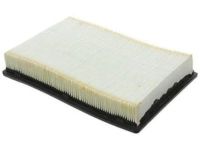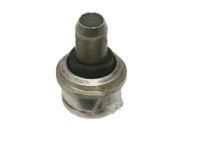

Why choose FordPartsGiant
- Optimal Shopping Experience
Want to buy parts for your vehicle? Look no further than FordPartsGiant.com, the best place for Ford F-250 genuine parts. For years, all of our Ford F-250 parts and accessories have been expedited directly from dedicated dealers and backed by the manufacturer's warranty, so buying from FordPartsGiant.com is always risk-free.
- Dedicated Customer Service
Our first-class customer service team is committed to providing you with the best assistance possible. Dedicated representatives are standing by to assist you by email, live chat, or phone. Every effort is made to ensure your order for OEM Ford F-250 parts arrives fast no matter your location in the nation, so your vehicle is up and running and back on the road.
- Unbeatable Prices
What makes us the best online source for Ford F-250 parts and truck parts? Our goal is to offer the lowest prices. You get giant savings shopping with FordPartsGiant.com. With a complete parts catalog, we cover a full selection of affordable OEM Ford F-250 parts and pickup parts with a huge inventory.
Popular Genuine Ford F-250 Parts
- Engine Parts View More >
- Lamps & Wiring Parts View More >
- Wheels & Brakes Parts View More >
- Fuel System & Manifolds Parts View More >
- Speedometer, Bumpers, Mirrors & Wipers Parts View More >
- Automatic Transmission Parts View More >
- Radiator & Grill Parts View More >
- Steering System & Drive line Parts View More >
- Alternator, Battery, Distributor & Starter Parts View More >
- Fenders & Hood Parts View More >
- Air Conditioner, Radio & Shock Absorbers Parts View More >
Shop Genuine Ford F-250 Parts with FordPartsGiant.com
The Ford F-250 is a light-duty truck that has a speed control system utilizing a tap-up/tap-down adjustment feature and an improved seat cushion. As for the engines, two versions of the 7.3L turbodiesel differing by direct injection and indirect injection were offered for the model. For the interior parts, environmentally friendly CFC-free air conditioning was installed, and the auto had the equipment of new side door beams, a center high-mounted stop lamp, a driver-side airbag, and a brake shift interlock system for all cars with an automatic transmission. For the 1996 model year, Short wheelbase Crew Cab and SuperCab styles of the Ford F-250 were available with a 6.75-foot box in 2- and 4WD configurations, as well as an improved hub-locking system and transfer case that was installed on all 4WD autos. As for the powertrain, the 7.5L V8 received a standard integral oil cooler and a throttle-control module for power takeoffs, and the 7.3L diesel edition was offered as an option. Ford F-250 parts refreshments include a black finish on instrument panels, a revised seat design with an integrated headrest, and Automatic Locking Restraint or Emergency Locking Restraint safety belts. What's more, a slotted-like front bumper and trailer tow wiring harness were offered as standard. As for the powertrain, the Ford F-250 was offered with three types: A 4.6-liter V-8 as standard, a 5.4-liter V-8 as optional, and a 7.3-liter turbo-diesel unit. The former can produce 220 horsepower at 4500 rpm and 290 foot-pounds of torque at 3250 rpm, while the middle one can produce 235 horsepower and 330 foot-pounds of torque, and the latter is lack statistics.
As the Ford F-250 ages, drivers often experience specific issues. Commonly, they report a 'death wobble' or excessive shaking, leading to loss of control. This issue manifests as intense vibrations, the vehicle tilting to one side, bouncing, bottoming out while driving, and emitting clunking, rattling, and scraping noises from beneath the vehicle. If these symptoms appear, inspecting the coil springs and drive shaft is advised. Engine issues are also common, typically characterized by rough operation, stalling, difficulty in starting, and inconsistent performance at different speeds leading to poor fuel economy. Accompanying these issues can be erratic displays or a rapidly depleting fuel gauge. In such cases, the fuel tank, fuel filter, and fuel tank sending unit should be checked. Additionally, maintaining the fog light bulb, crucial for visibility in adverse weather conditions, alongside the wheel seal and wheel cover that prevent dirt and moisture accumulation, ensures optimal vehicle operation.
OEM parts are unrivaled in terms of quality. They go through extensive quality control inspections and are produced in accordance with Ford's official factory specifications. All of these remove defects and imperfections. So you can relax knowing they promise exceptional lifespan and flawless fitment. With a comprehensive array of OEM Ford F-250 parts, like Frame, Exhaust System & Springs, Door glass and fittings, from fuel pumps to door handles, our website is a one-stop-shop for your needs. All our genuine F-250 parts, such as Manual Transmission, Body are backed by the manufacturer's warranty and are offered at the most competitive prices in the market. Rest assured, you can shop with complete confidence.
Ford F-250 Parts Questions & Answers
- Q: How to inspect and replace the air filter in a preventative maintenance program on Ford F-250?A: To keep the filter in good condition, it should be inspected periodically under a preventive maintenance program. Unscrew the wing nut and lift off the top plate to remove the filter. In case of connections with emission control devices, tilt it backward to access them. You can hold it up to sunlight or use a flashlight to check if it is clear. If you see light coming through it then fine. Use a rag to wipe inside of the housing out. Now put the old one back or install the new one into housing and reinstall top plate on it.
- Q: What are the indications that a water pump needs replacement on Ford F-250?A: A water pump that needs replacement shows signs through noise and leakage. Visually check for leakage around the front pump seal and drain hole. Check the front bearing for roughness or looseness by removing the drive belt and testing for movement. Check the sealing surfaces for signs of leakage. If any of these signs are present, replace the water pump.
- Q: How to remove and install balljoints on different types of axles on Ford F-250?A: Use the balljoint removal/installation tool to remove the upper balljoint first, then the lower one. Do not heat the axle. To install, use the tool to seat the lower balljoint first, then the upper one. Install the snap-rings and reinstall the spindle. Remove the spindle/knuckle and lower balljoint snap ring. Use the tool to press out the lower balljoint first, then the upper one, and then install the new upper balljoint, then the lower one along with the lower balljoint snap-ring, and reinstall the spindle/knuckle.



















































